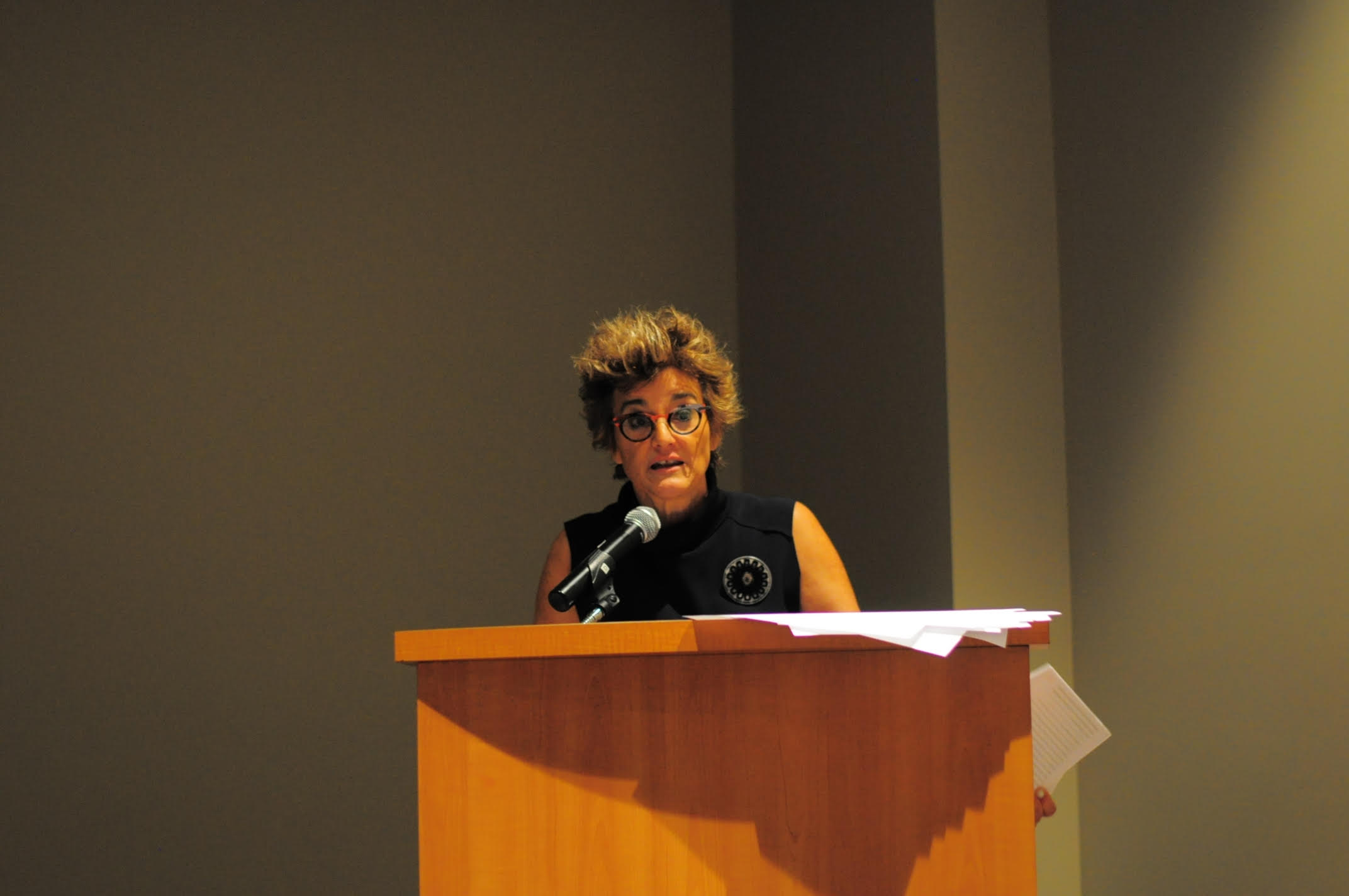Mari Carmen Ramirez carries herself like a survivor of the ‘70s punk era gone respectable: angular, dynamic, cool, whip-sharp and passionate. She speaks with a slight accent and with a great enthusiasm, generous in her descriptions of art as well as her praise of her colleagues. This is a woman who has never lost her passion, who has always loved her field and continues to advance herself and her cause out of sheer enthusiasm. Sitting in the Warch Campus Center’s cinema on Monday, September 28, we sat and heard her lecture: “Paradigm Shifts in Latin American and Latino Art (1980-2015).”
For the uninitiated into Latin American art from this time period, the lecture proved to be a revelation. While most Americans’ knowledge of Latin American art begins and ends with Kahlo and Rivera, Ramirez revealed in her lecture an entire cosmos of art, one made up of every nation and ethnicity south of the Rio Grande.
Ramirez’s taste is immaculate: her choices of works ran the gamut from sculpture and mosaic to masks and photography. From the beginning she refutes the idea of “Latino Art,” calling the term too narrow for the limitless depth of the art made over centuries and across generations and backgrounds. Her argument and evidence make it overwhelmingly difficult, if not impossible, to disagree. When seeing this art there are concerns with the same ideas, but the approaches are infinite in their variations. Acknowledgement of the inherent imperialism and colonialism from the United States’ treatment of its Latin American population and neighboring countries has been biased at best and overwhelmingly cruel at its lowest. It has resulted in certain concerns in art ever being present. Ramirez chose to frame the art as an expression, rather than a response.
Ramirez also acknowledges the complexity of the history of Latin American art’s place in the United States, with artists being supported by Nelson Rockefeller and purchased by places such as the Museum of Modern Art. But history, Ramirez argues, throws off plans. The Mexican muralists were poised to become the most important artists of the period. However, with World War II and the Cold War’s consequent arrival, their pieces were confined to the basement of museums and inside the homes of private collectors.
Recovery was slow, Ramirez explained, over decades, following the shift of time and politics. Ramirez herself was candid about her own efforts, giving us a fascinating virtual tour of the “Inverted Utopias” exhibit she helped curate, where the artists ranged from the cutting edge of contemporary art of Brazil to Xul Solar’s collaborations with Jorge Luis Borges. These were not chosen merely for novelty or political reasons: Ramirez emphasized their formal brilliance and their moving side by side or ahead of their European counterparts. Again, Ramirez’s evidence was rock solid and impossible to argue with. Why would you, of course, when the art’s brilliance speaks for itself so obviously?
“We are the new world,” Ramirez quoted during her lecture, citing a Latino activist. She was talking about politics and civil rights, as was the activist, but she was also talking about art. As said before, these Latin American artists were at the forefront of their artistic movements. The art itself has exploded exponentially. There are more than 85 dissertations on the subject currently being worked on in American universities this year alone. This is the future, Ramirez emphasized, and it is one we should look forward to. Art like this and the enthusiasm behind it should be embraced with open arms.

